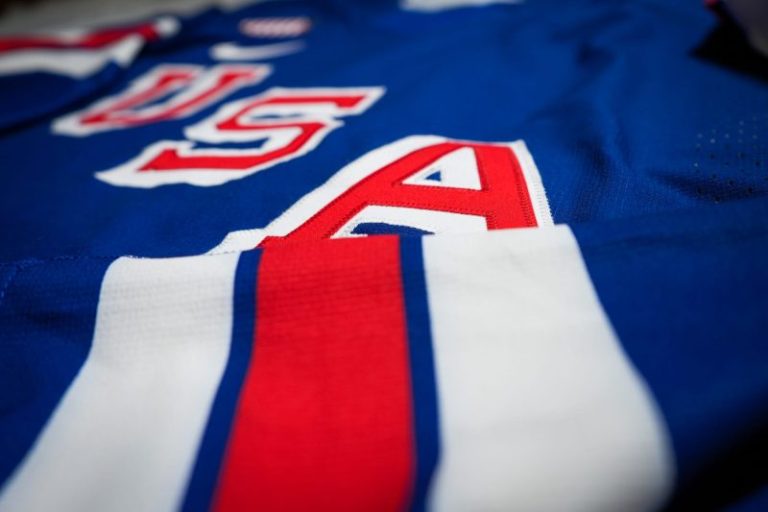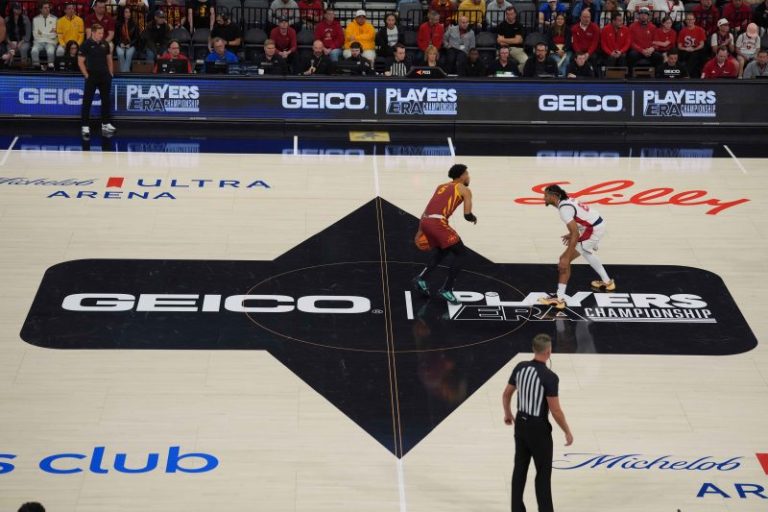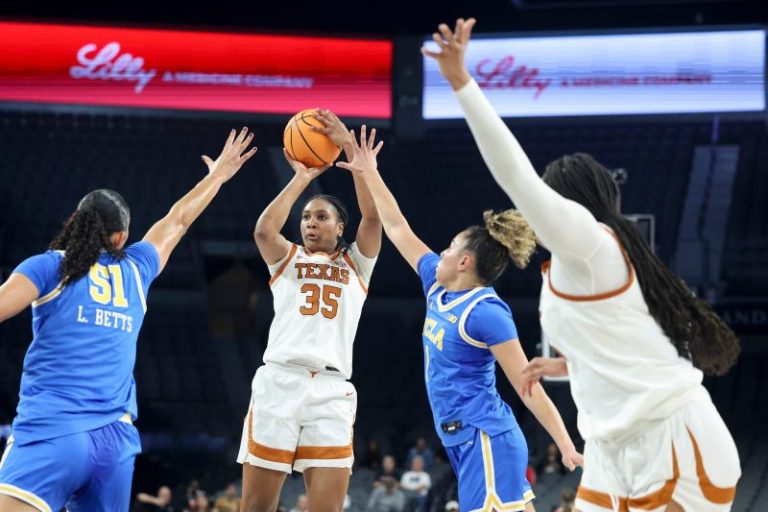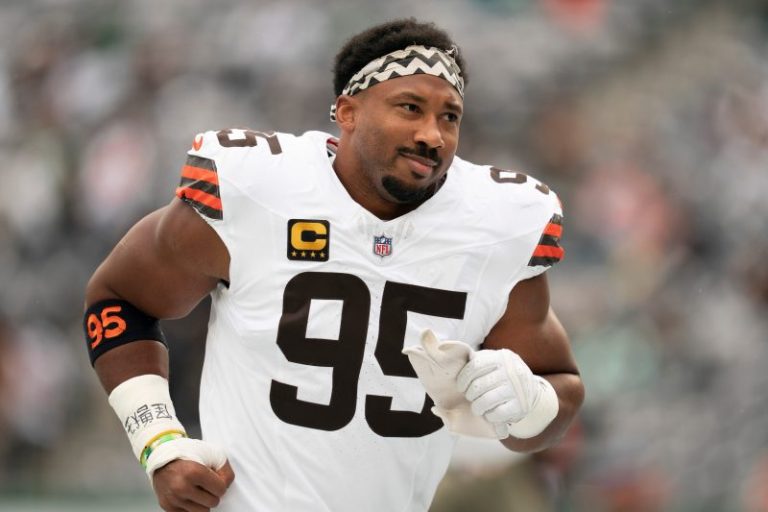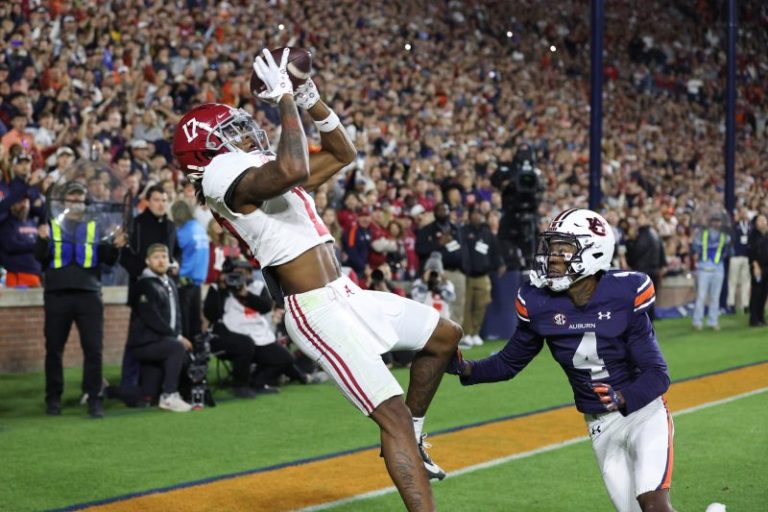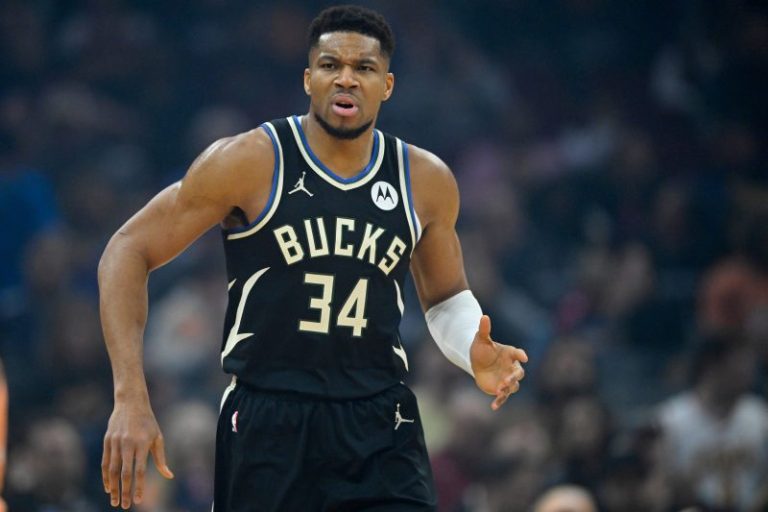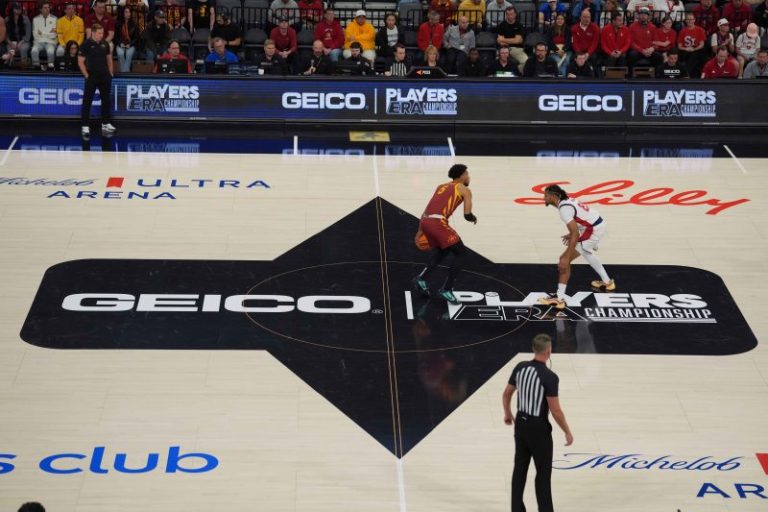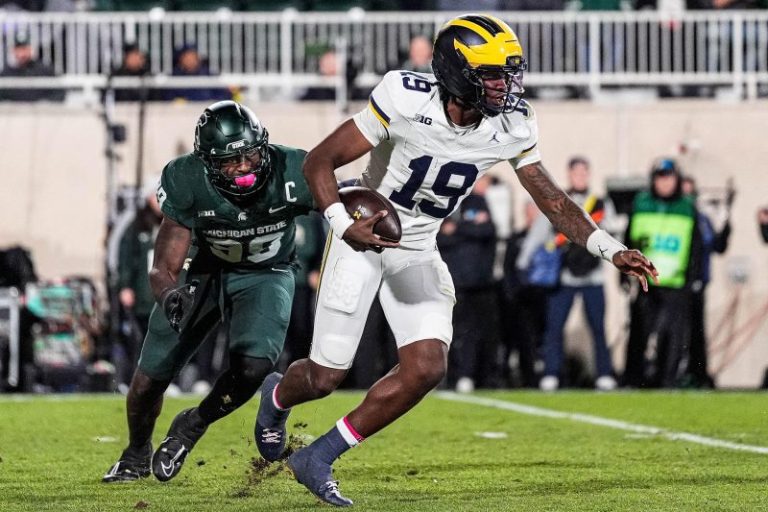The Texas Longhorns handed the UCLA Bruins their first loss of the season.
No. 4 Texas defeated No. 3 UCLA, 76-65, at the Players Era Women’s Championship semifinal in Las Vegas’ Michelob ULTRA Arena on Wednesday after the Bruins’ double-digit comeback fell short.
Texas was dominant in the first half and led by as many as 23 points, but UCLA seized some momentum toward the end of the the third quarter and went on a 22-3 run to come within four points of the Longhorns with 4:26 remaining in the game. Texas didn’t panic and Rori Harmon took over.
“In those moments, we understand that the game is about runs, whether we’re going on our run or they’re going on their run,’ Booker said. ‘We have to keep our composure. We have all faith and trust in what we do and trust in each other. We just came together and understood what was at stake here. We just wanted to win that bad.”
Texas forward Madison Booker pickpocketed UCLA’s Gianna Kneepkens with 48 seconds left in the game, marking the Bruins’ 19th turnover. UCLA then fouled Harmon, who knocked down both free throws to go up 72-64. Harmon intercepted Charlisse Leger-Walker’s inbound pass on the next possession, marking the Bruins’ 20th turnover of the game, a season-high for coach Cori Close’s squad. Harmon made both free throws.
Harmon scored every field goal for Texas in the fourth quarter. The senior guard finished with a season-high 26 points, five assists, three rebounds, one steal and one turnover. Texas head coach Vic Schaefer said Harmon’s ‘gutsy’ performance proved she’s ‘the best point guard in the country.’
‘In the fourth quarter, she was about the only one that looked like she wanted it, so I was emptying the playbook for her,’ Schaefer said postgame. ‘She made some big shots for us.’
Booker added 16 points (6-of-17 FG, 1-of-4 3PT), seven rebounds and five assists.
Kiki Rice had a big fourth quarter to get the Bruins back in it. She was struggling early, shooting 1-of-7 from the field, before exploding for 11 of her 17 points in the fourth quarter. Kneepkens also added 17 points in the losing effort, while Betts was held to eight points and seven rebounds.
Both teams are coming off a Final Four appearance last season. UCLA was ousted from the 2025 NCAA Tournament by the UConn Huskies in a lopsided 85-51 loss, while Texas lost to South Carolina, 74-57.
Catch up with USA TODAY Sports’ live updates and highlights from the top-5 showdown between UCLA and Texas:
End of Q3: Texas 62, UCLA 47
UCLA appeared to settle down in the third quarter and outscored Texas 22-17 in the frame, cutting the Bruins’ deficit to 15 points heading into the fourth quarter. Can UCLA continue this momentum and make a comeback?
Texas has maintained control of the contest through three quarters. Rori Harmon has a team-high 16 points and she’s one of four players to reach double digits for Texas. Madison Booker added 14 points, six rebounds and four assists, while Jordan Lee added 13 points, four assists, two steals and two blocks.
Gianna Kneepkens and Charlisse Leger-Walker have combined for 27 of UCLA’s 47 points. The Bruins must take better care of the ball if they want to get back into this game. UCLA is up to 15 turnovers.
Lauren Betts returns after going down with injury
Betts appeared to injure her left arm after wrestling for a loose ball with Madison Booker. The incident happened with 9:32 remaining in the third quarter when Booker stripped Betts of the ball and Betts’ arm appeared to bend at an awkward angle as they both fell to the floor. Betts stayed down on the court in pain as play continued on the other side of the court. She was able to get up under her own power and ran straight back to the locker room. Betts returned from the locker room and entered the game with 7:03 remaining.
Halftime: Texas 45, UCLA 25
The first half has been all Texas so far. The Longhorns have dominated the Bruins on both sides of the ball and have a 20-point lead.
Three Texas players are in double-digits, led by Madison Bookers’ 13 points, five rebounds and two assists. Rori Harmon and Jordan Lee, who got the Longhorns going early, each have 10 points in the first half. Justice Carlton added eight points and four rebounds off the bench.
Texas’ defense has been suffocating, holding UCLA to only 10 points in the first quarter and 15 points in the second. The Longhorns have forced the Bruins into 10 turnovers and are winning the rebound battle (18-14).
Charlisse Leger-Walker leads UCLA with nine points, but she’s been limited to 13 minutes after picking up two early fouls. Lauren Betts added six points and four rebounds. The team is collectively shooting 12-of-27 from the field and 1-of-4 from the 3-point line.
Texas’ Justice Carlton down a shoe
No shoe, no problem. Texas sophomore forward Justice Carlton was battling for an offensive rebound with 5:38 seconds remaining in the second quarter when UCLA’s Kiki Rice inadvertently stepped on Carlton’s shoe. Carlton didn’t stop playing and ran back on defense with only one shoe. Texas head coach Vic Schaefer sent in a substitute for Carlton so she could lace up her sneakers. Carlton has six points and four rebounds (three offensive rebounds) in eight minutes off the bench.
End of Q1: Texas 20, UCLA 10
The Texas women’s basketball team closed the first quarter on a 10-2 run to push their lead over UCLA to 10 points heading into the second quarter.
Texas senior guard Rori Harmon was doing a bit of everything. Harmon has a team-high six points, shooting a perfect 3-of-3 from the field. She also drew two offensive fouls on the Bruins in the first quarter.
Five different players have scored for Texas. The team is shooting 47% from the field, but 0-of-4 from beyond the arc. The offense isn’t the only thing churning. Texas’ defense has been stout and the Longhorns forced the Bruins into seven turnovers.
Lauren Betts has two points for UCLA.
Texas takes early lead over UCLA
We’re underway in Las Vegas. The Longhorns have looked like the more aggressive team to start and jumped to a 8-4 lead over the Bruins with 6:14 remaining in the first quarter.
Texas forced UCLA into two early turnovers and have held the Bruins to 2-of-6 shooting from the field.
Jordan Lee and Rori Hamon lead the Longhorns with four points each. Charlisse Leger-Walker and Gabriela Jaquez each have two points for the Bruins.
What time is UCLA vs. Texas women’s basketball?
No. 3 UCLA (6-0) faces No. 4 Texas (5-0) in the Players Era Women’s Championship at 2 p.m. ET on Wednesday, Nov. 26, at Michelob ULTRA Arena in Las Vegas.
UCLA vs. Texas: TV, streaming
Date: Wednesday, Nov. 26
Time: 2 p.m. ET (11 p.m. PT)
Location: Michelob ULTRA Arena (Las Vegas)
TV: truTV
Stream: Fubo
UCLA women’s basketball starting lineups
Lauren Betts, C
Kiki Rice, G
Gabriela Jaquez, G
Gianna Kneepkens, G
Charlisse Leger-Walker, G
Texas women’s basketball starting lineup
Rori Harmon, G
Jordan Lee, G
Breya Cunningham, F
Teya Sidberry, F
Madison Booker, F
Texas women’s basketball warms up
Longhorns coach Vic Schaefer and his team ready for their matchup against the Bruins.
Who’s ready for No. 3 vs. No. 4?
Nothing like a little Wednesday morning hoops.
The USA TODAY app gets you to the heart of the news — fast. Download for award-winning coverage, crosswords, audio storytelling, the eNewspaper and more.
This post appeared first on USA TODAY


